Overview
In this article, we explore a comprehensive seven-step B2B sales process that is essential for the success of small businesses. This process includes:
- Prospecting
- Opportunity generation
- Qualification
- Pitching
- Addressing objections
- Closing
- Follow-up
Each step is backed by statistics and strategies that highlight the importance of understanding client needs, being persistent in follow-up, and committing to continuous improvement. Together, these elements not only enhance conversion rates but also drive sustainable growth.
We understand the challenges small business owners face, and it’s crucial to recognize how these steps can transform your approach to sales. By focusing on your clients' needs, you can build stronger relationships and foster trust. Imagine how much more effective your follow-up could be when it’s rooted in genuine care and understanding.
As you implement these strategies, remember that every step is an opportunity for growth. Embrace the process, and don’t hesitate to refine your approach as you learn what works best for your unique situation. Together, we can achieve success in navigating the complexities of B2B sales, ensuring that your business not only survives but thrives.
Introduction
Navigating the B2B sales landscape can feel overwhelming for small businesses, as it is a complex web of interactions and strategies. We understand that this intricate process is filled with unique challenges, and mastering it is not just beneficial; it is essential for achieving sustainable growth and success. In this guide, we will outline seven critical steps designed to transform you into an adept sales professional. From identifying and generating leads to closing deals and nurturing client relationships, these steps are here to support you. With so many moving parts, you may wonder: how can you effectively engage prospects and convert them into loyal clients? Together, we can explore these strategies and empower your journey.
Understand the B2B Sales Process
The b2b sales process includes several essential stages:
- Prospecting
- Opportunity generation
- Qualification
- Pitching
- Addressing objections
- Closing
- Follow-up
Each phase plays a crucial role in transforming prospects into clients, and understanding this process is vital for small business proprietors like you. By familiarizing yourself with these stages, you can effectively pinpoint where to focus your efforts and resources.
For instance, research shows that 70% of B2B companies regard prospecting as integral to their success. This underscores the importance of a robust initial outreach strategy. Additionally, consider that 80% of transactions require over four follow-up calls to convert prospects. This highlights the necessity of persistence throughout the sales process. Engaging with prospects at the right moment can significantly enhance your conversion rates. In fact, 81% of buyers initiate first contact with sellers, indicating that timely outreach is essential.
Moreover, 73% of businesses report that at least 21% of their revenue pipeline originates from incoming prospects. This emphasizes the need to incorporate inbound strategies alongside the specified phases. The complexity of the B2B purchasing landscape is also noteworthy, with the average buying group now consisting of 10-11 stakeholders. This is a challenge that independent owners must navigate efficiently.
By utilizing Wayy.ai's daily email insights, you can monitor key metrics such as how many prospects were reached, who expressed interest, and how conversion rates are improving. This data-driven approach empowers you to streamline your sales process, ensuring a smooth transition between stages. Ultimately, this leads to and sustainable growth. Together, we can achieve success in this intricate landscape.
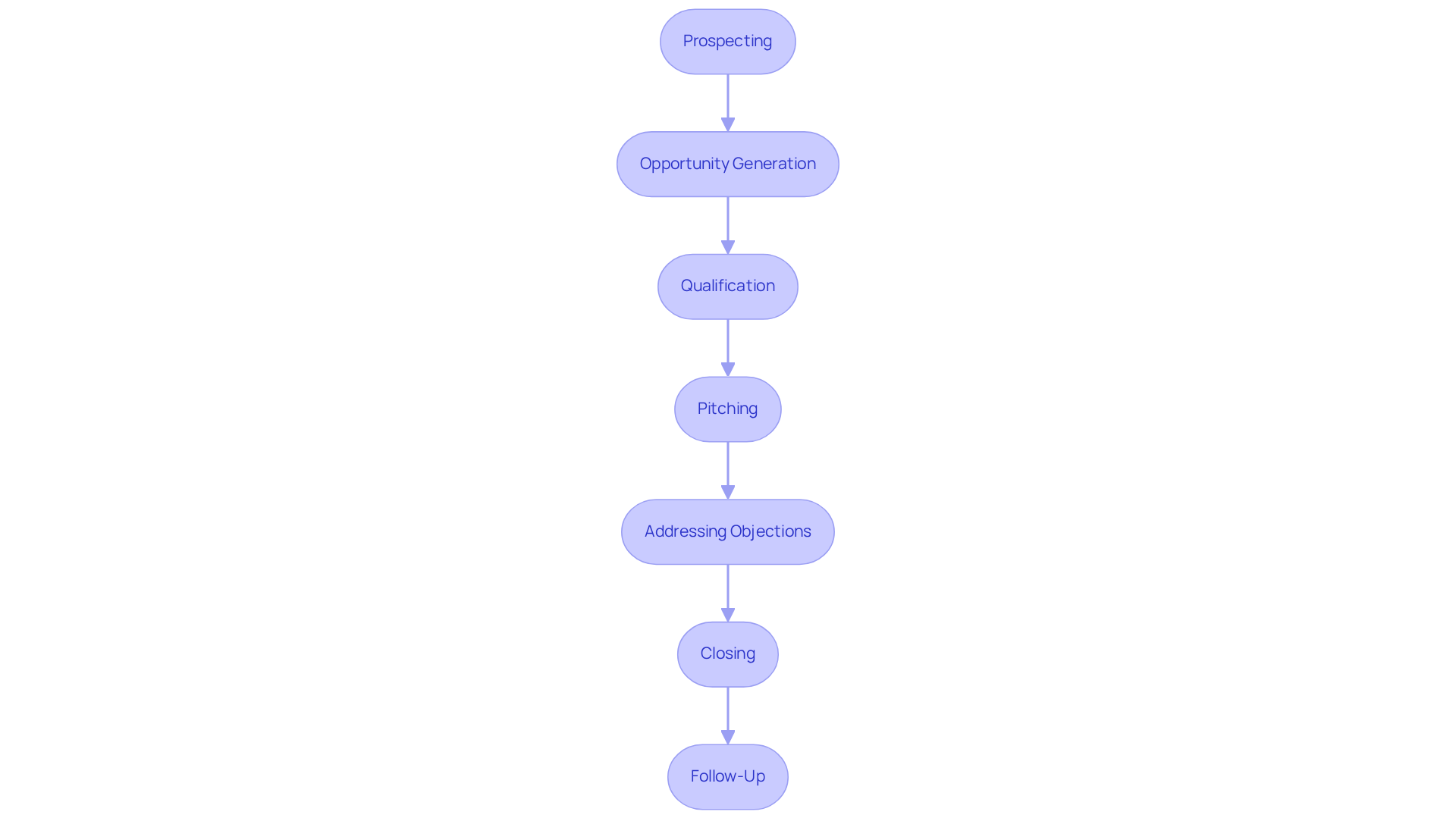
Identify and Generate Leads
To effectively recognize and create prospects, it’s essential to start by clearly outlining your (ICP). This foundational step not only helps you target your outreach more precisely but also addresses the challenges many small business owners face in identifying the right clients.
Consider employing robust tools like LinkedIn Sales Navigator, favored by 44% of B2B marketers for client acquisition, alongside industry-specific databases and social media platforms to uncover potential customers. Networking events and webinars can significantly enhance your reach; in fact, 75% of marketers associate webinars with higher revenue and reduced acquisition costs, providing opportunities to engage with prospects in a more personal setting.
Alongside direct outreach, think about utilizing content marketing tactics, such as informative blogs and whitepapers, to naturally draw potential clients. It’s heartening to know that content marketing generates three times more prospects than traditional outbound methods at a lower cost, establishing your business as an industry expert while cultivating opportunities through valuable insights.
A multi-channel approach is crucial; integrating social media, email marketing—used by 89% of marketers for generating prospects—and content creation will greatly improve your chances of connecting with potential clients. As Anil Salvi, a specialist in generating prospects, wisely states, "Using tools to scale efforts while maintaining quality ensures efficiency and consistency."
By implementing these compassionate strategies, you can enhance your customer acquisition efforts and drive growth for your small business, knowing that you are not alone in this journey.
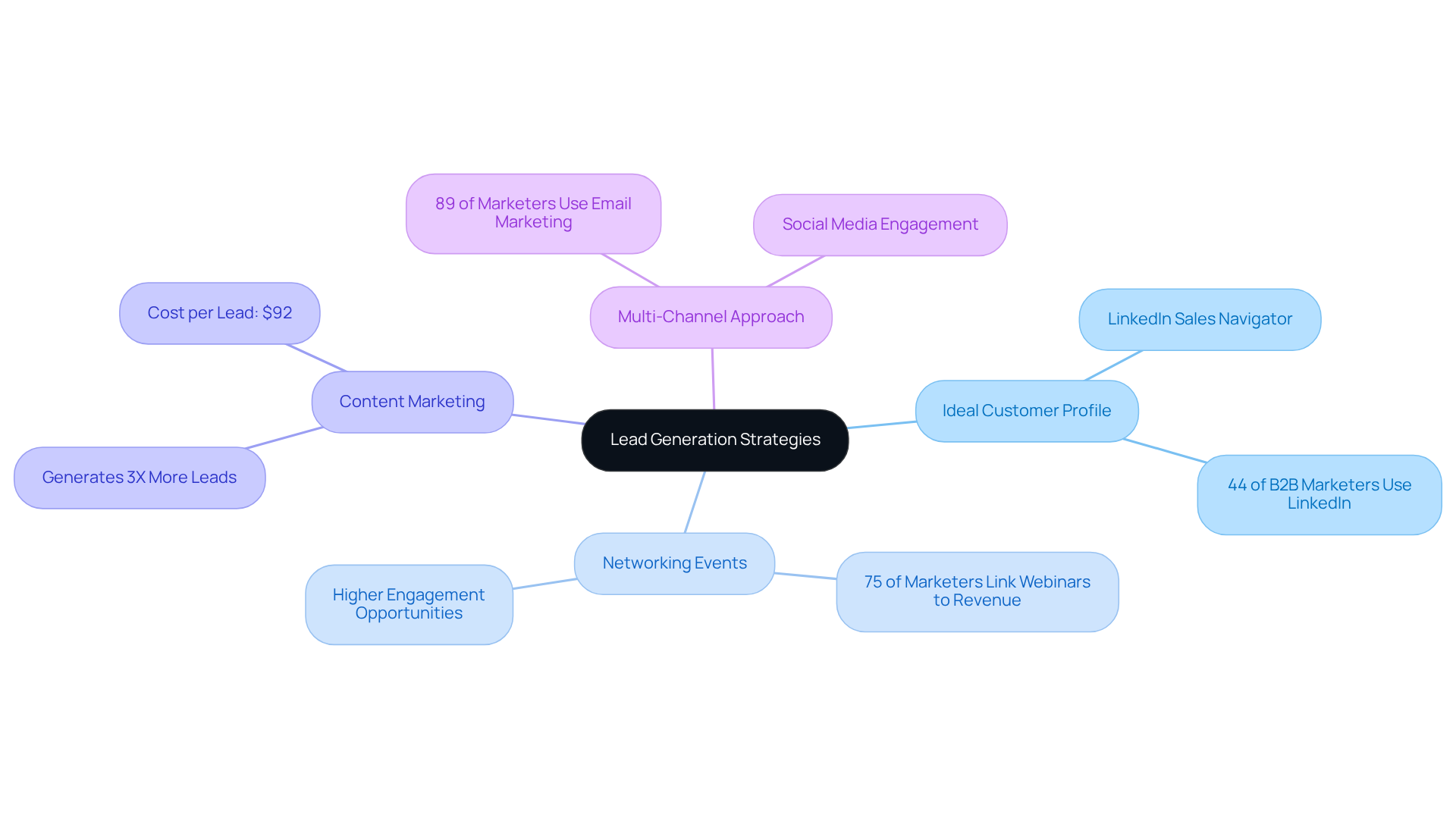
Qualify Your Leads
Qualifying prospects is essential for optimizing your B2B sales process, and using a structured approach like the BANT (Budget, Authority, Need, Timeline) framework can significantly enhance your success. Have you considered how a few open-ended questions could help you evaluate a prospect's interest and preparedness to buy? Look for signals of intent, such as engagement with your content or specific inquiries about your services. Companies that successfully apply qualification techniques often observe conversion rates rise by 15-20%. This emphasizes the importance of prioritizing qualified prospects in your outreach.
Focusing on prospects that match your qualification criteria allows you to optimize your outreach efforts in the B2B sales process, ultimately enhancing your likelihood of finalizing deals. Thriving local enterprises have shown that by applying the BANT framework, they can not only recognize high-potential prospects but also improve their overall revenue performance. For instance, a modest tech startup that embraced this approach reported a remarkable 30% rise in their conversion rate within just a few months.
Insights from trainers remind us that effective prospect qualification in the B2B sales process is not merely about collecting information; it's about understanding the distinct requirements of each potential client. By concentrating on qualified prospects, small enterprise owners can optimize their resources and foster significant growth in their revenue stream. Together, we can achieve success by ensuring that our are directed towards those who truly need our services.
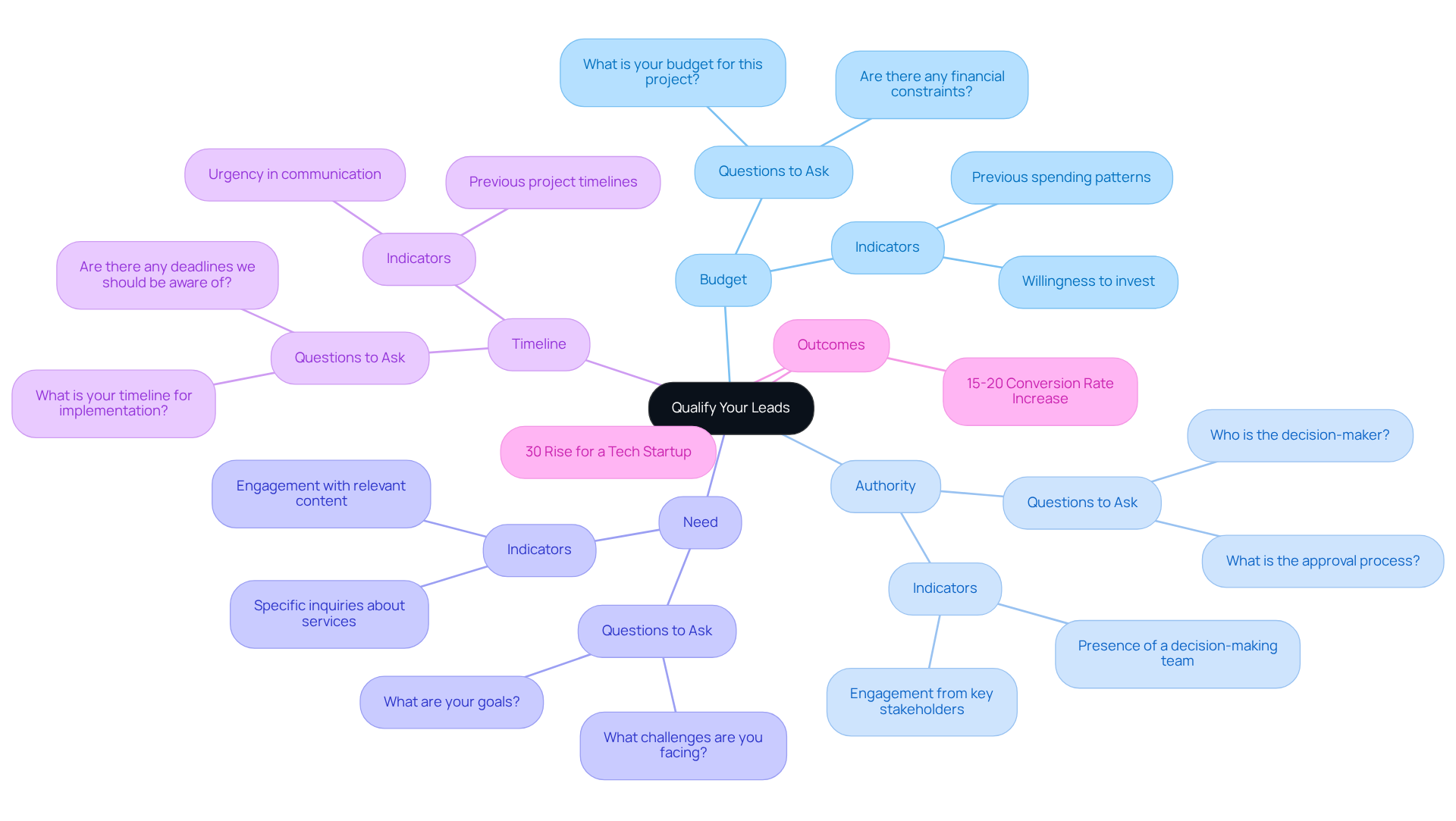
Pitch Effectively to Prospects
When pitching to prospects, it’s essential to focus on their and how your solution can truly address them. Begin with a strong opening that captures their attention, followed by a clear value proposition that resonates with their needs. Consider using storytelling techniques to illustrate how your product or service has positively impacted similar businesses. This not only builds interest but also fosters a connection.
As you engage in the conversation, be prepared to adapt your pitch based on the prospect's feedback and questions. This responsiveness not only shows that you value their input but also ensures that you maintain engagement throughout the discussion. Remember, we understand your challenges, and together we can achieve success by creating solutions that matter.
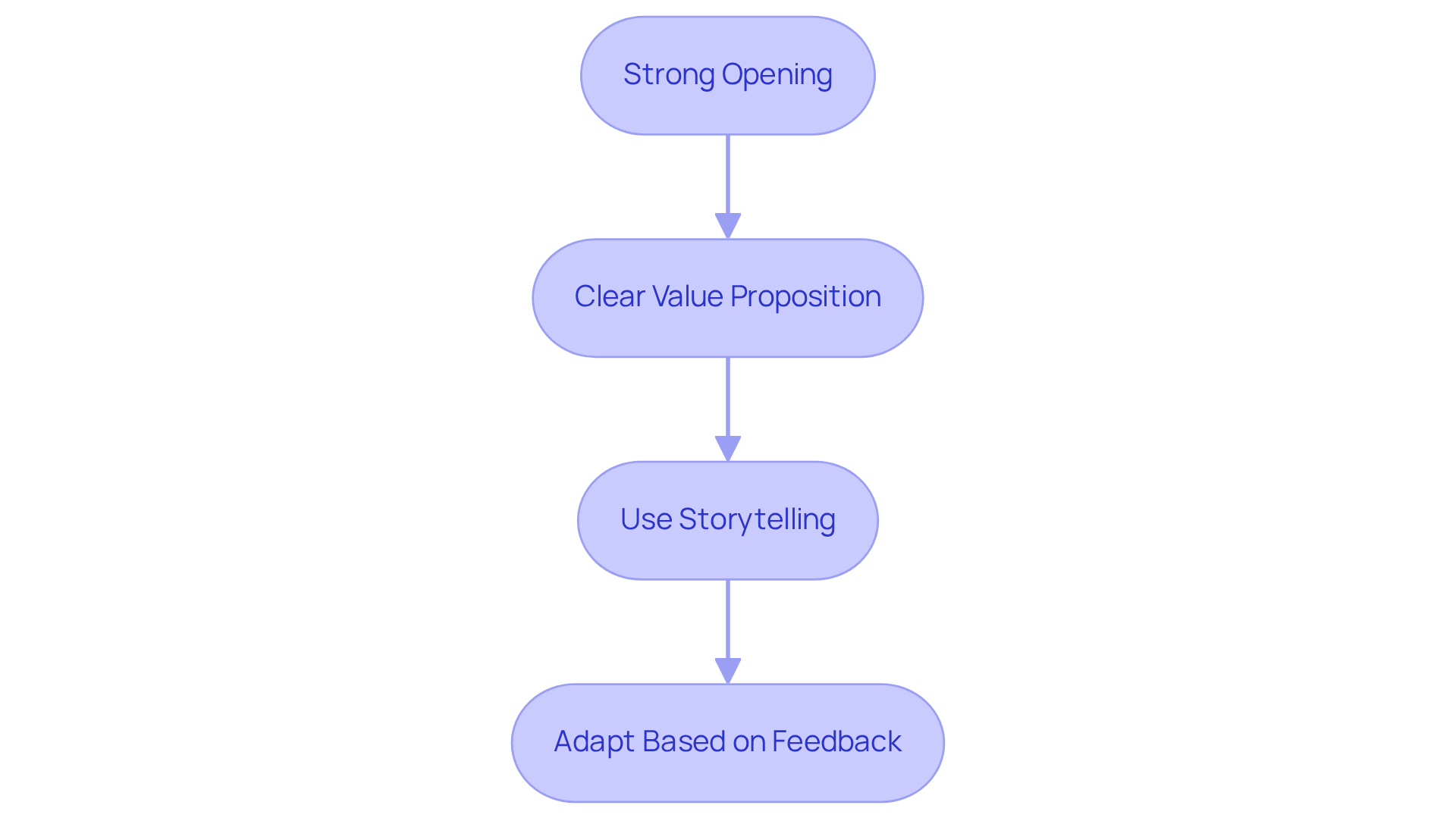
Handle Objections with Confidence
When faced with objections, it’s essential to listen actively to truly of the prospect. Acknowledge their feelings; this shows you care and are invested in their experience. You might consider using the 'feel-felt-found' method:
- Relate to their concern
- Share a similar experience
- Explain how your solution made a positive difference
Always aim to provide clear, concise answers that not only address their doubts but also reinforce the benefits of your offering. This approach not only alleviates their concerns but also fosters a sense of trust and understanding. Remember, together we can navigate these challenges.
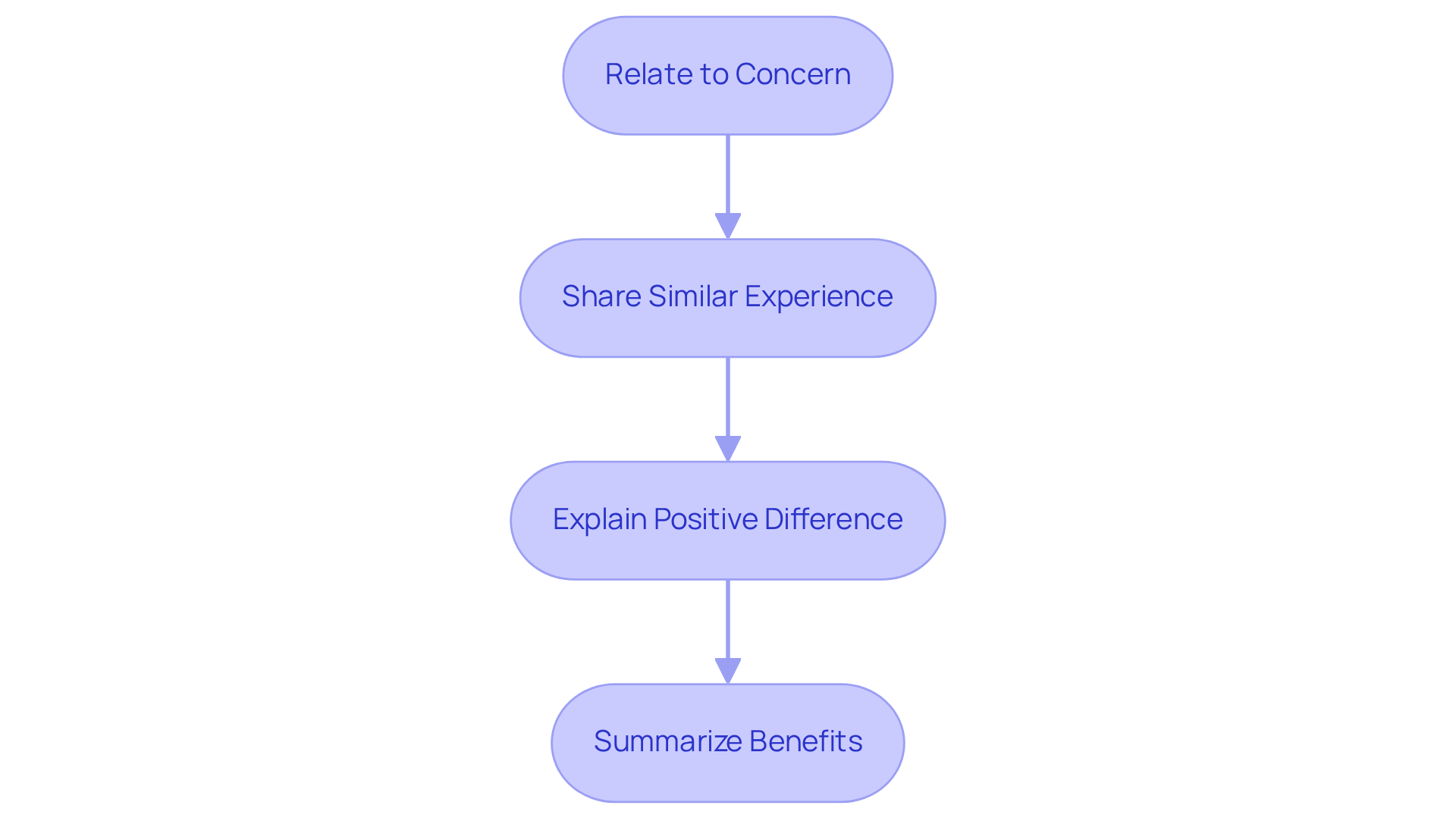
Close Deals Successfully
To successfully close deals, it's essential to create a sense of urgency. By highlighting limited-time offers or the benefits of acting quickly, you can motivate prospects to take action. Did you know that statistics show 80% of transactions require five follow-up calls? Yet, only 66% of representatives make more than one follow-up. This illustrates the importance of persistence in the closing process.
Consider employing effective closing techniques, such as:
- The assumptive close, where you gently assume the prospect is ready to proceed.
- The summary close, which recaps the key benefits discussed.
Always remember to ask for the sale directly; after all, 80% of buyers prefer to be contacted over email, making it a valuable channel for finalizing agreements.
Be prepared to address any last-minute objections that may arise. It's important to note that 44% of buyers do not move beyond initial discussions due to a lack of ongoing communication. Following up promptly is crucial to ensuring a smooth transition to onboarding, reinforcing both the urgency and your commitment to meeting the prospect's needs.
By applying these strategies and utilizing Wayy.ai's AI-driven client acquisition platform, you can significantly enhance your closing success in within the competitive landscape. Together, we can navigate these challenges. Begin using Wayy today to streamline your prospect generation and enhance your conversion process.
Follow Up to Build Relationships
After closing a deal, it’s essential to follow up with your new client. This simple act not only ensures their satisfaction but also addresses any questions they may have. Consider scheduling regular check-ins to nurture the relationship and provide ongoing support. Follow-up emails can be a wonderful opportunity to share relevant content, updates, or offers that might pique their interest. Remember, is not just about the initial sale; it can lead to repeat business and invaluable referrals, which are crucial for the growth of your small business.
We understand your challenges as a small business owner, and by fostering these connections, you can create a supportive network that benefits everyone involved. Together, let’s take the steps needed to ensure your clients feel valued and appreciated. After all, their success is intertwined with yours.
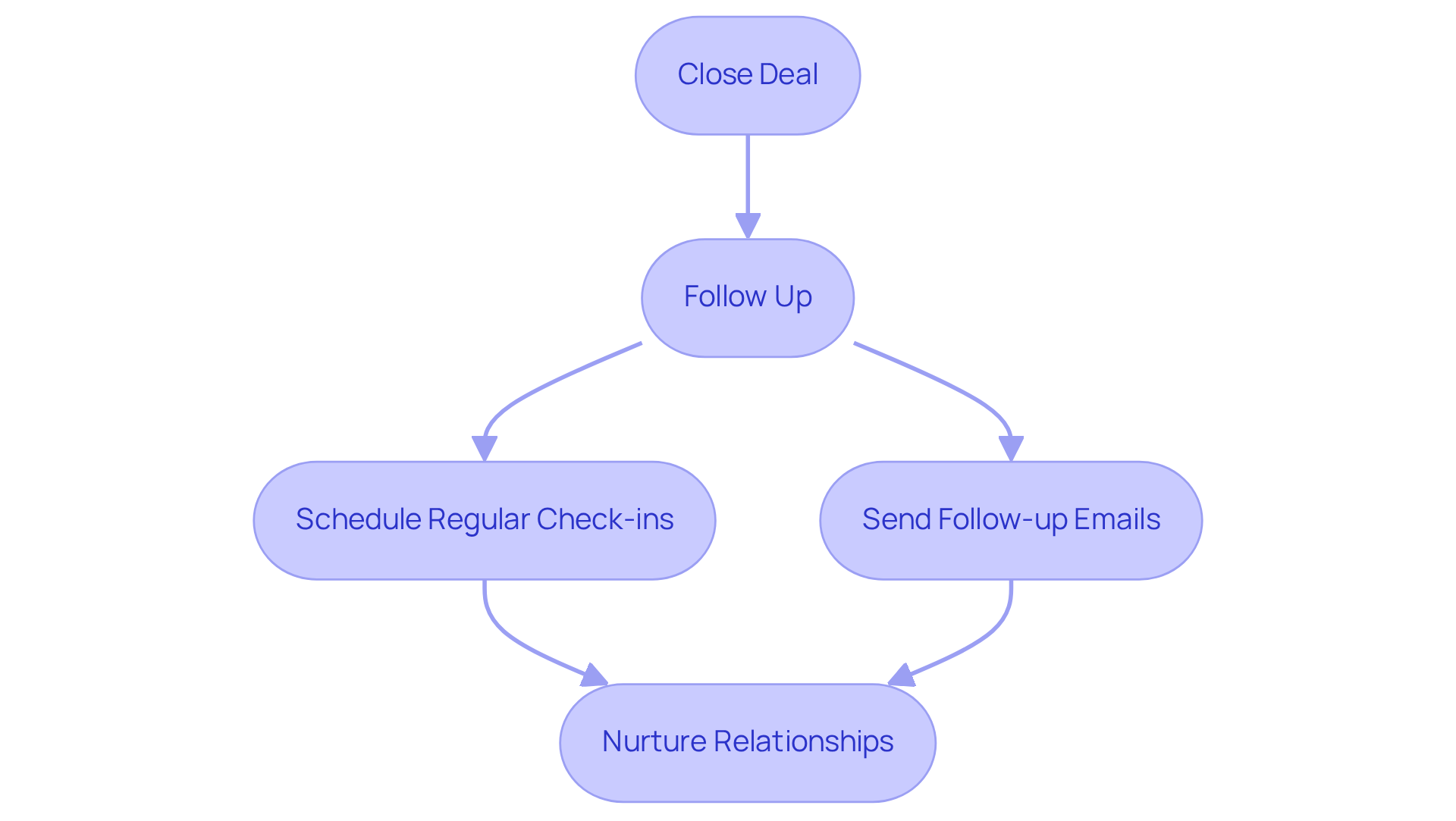
Refine Your Sales Process Continuously
To continuously enhance your selling procedure, it's vital to gather feedback from both your team and clients about their experiences. This feedback is essential for identifying trends and pinpointing areas that need improvement. By consistently examining revenue information, you can uncover insights that guide your strategies. For instance, Wayy.ai enables users to create over 60 target client connections each month, showcasing its effectiveness in refining business processes.
Consider implementing regular training sessions to keep your team informed about best practices and new techniques. This fosters a , which is crucial for growth. As Ken Blanchard wisely stated, 'Feedback is the breakfast of champions,' highlighting how vital feedback is in driving progress. Stay informed about industry changes and adapt your strategies accordingly.
By prioritizing feedback and continuous improvement in the b2b sales process, you can significantly enhance your sales effectiveness and drive sustainable growth. Remember, cultivating a feedback culture is essential for organizational success. It thrives on making feedback a habit, as emphasized by insights from industry leaders. Together, we can achieve success by embracing this journey of improvement.
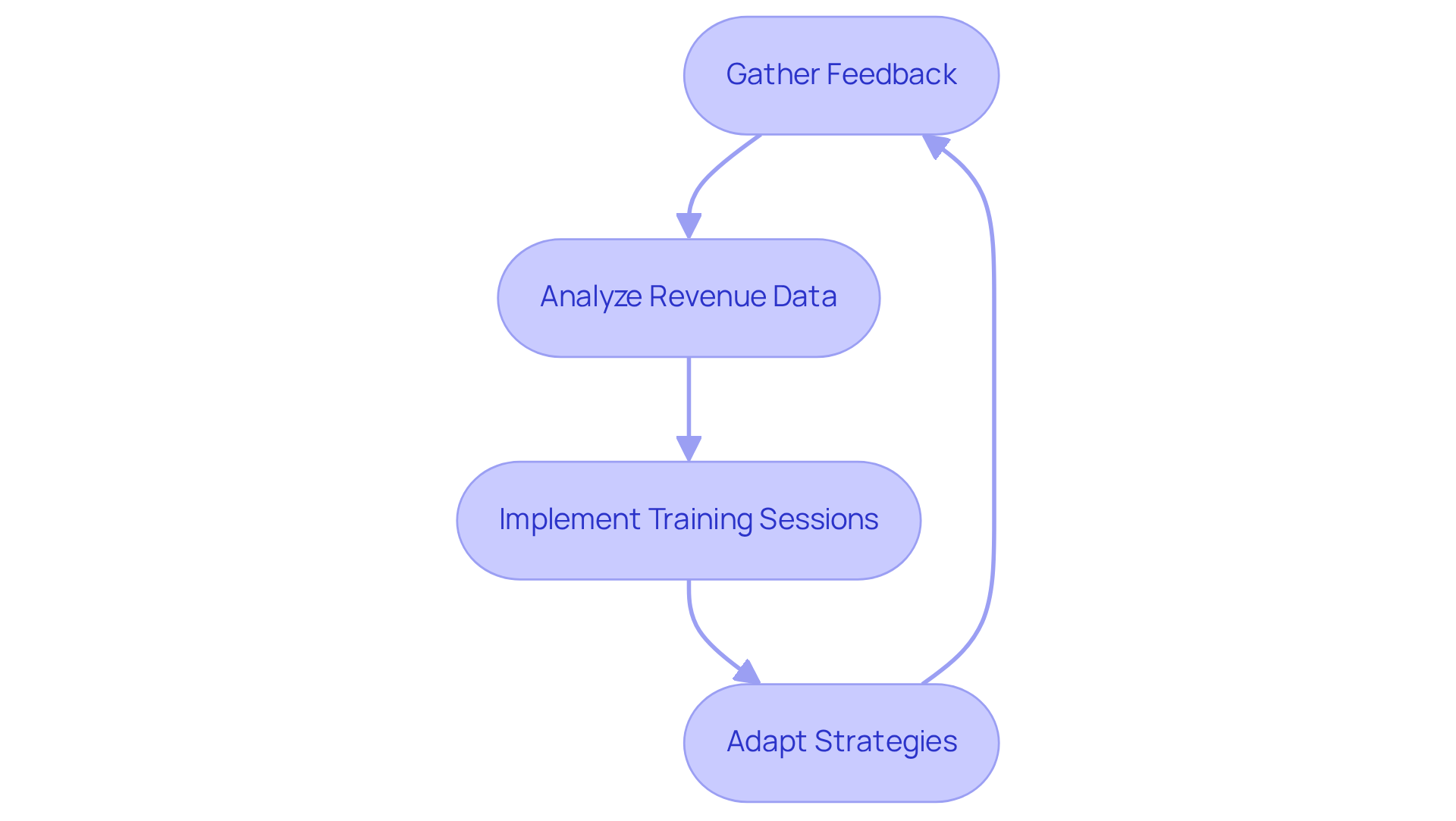
Conclusion
Mastering the B2B sales process is not just important; it’s essential for small businesses striving to thrive in today’s competitive landscape. By understanding and effectively navigating the seven critical stages—prospecting, opportunity generation, qualification, pitching, handling objections, closing, and follow-up—business owners can truly transform prospects into loyal clients. This structured approach enhances sales efficiency and fosters sustainable growth through meaningful client relationships.
Key insights from the article highlight the significance of each stage in the sales process. For instance:
- Effective prospecting lays a solid foundation for successful outreach.
- Thorough lead qualification ensures that efforts are directed toward high-potential clients.
- Employing effective pitching techniques and confidently addressing objections can significantly improve conversion rates.
- The role of persistent follow-up is crucial; it builds trust and encourages repeat business.
Ultimately, the journey of mastering the B2B sales process is ongoing. We encourage small business owners to continuously refine their strategies by gathering feedback, analyzing performance metrics, and staying informed about industry trends. Embracing a culture of continuous improvement not only enhances sales effectiveness but also positions businesses for long-term success. By taking actionable steps toward mastering these processes, you will pave the way for greater achievements and a more robust revenue stream.
Frequently Asked Questions
What are the main stages of the B2B sales process?
The main stages of the B2B sales process include prospecting, opportunity generation, qualification, pitching, addressing objections, closing, and follow-up.
Why is understanding the B2B sales process important for small business owners?
Understanding the B2B sales process is vital for small business owners as it helps them identify where to focus their efforts and resources to effectively transform prospects into clients.
What percentage of B2B companies consider prospecting integral to their success?
Research shows that 70% of B2B companies regard prospecting as integral to their success.
How many follow-up calls are typically required to convert prospects in B2B sales?
It is noted that 80% of transactions require over four follow-up calls to convert prospects.
What is the significance of timely outreach in the B2B sales process?
Timely outreach is essential because 81% of buyers initiate first contact with sellers, indicating that engaging with prospects at the right moment can significantly enhance conversion rates.
What percentage of revenue pipelines originate from incoming prospects for businesses?
73% of businesses report that at least 21% of their revenue pipeline originates from incoming prospects.
How can Wayy.ai assist in the B2B sales process?
Wayy.ai provides daily email insights to monitor key metrics such as the number of prospects reached, those who expressed interest, and improvements in conversion rates, empowering businesses to streamline their sales process.
What is an ideal customer profile (ICP) and why is it important?
An ideal customer profile (ICP) is a clear outline of the type of customer a business aims to target. It is important because it helps businesses identify and create prospects more effectively.
Which tools can be used for client acquisition in B2B marketing?
Tools like LinkedIn Sales Navigator, industry-specific databases, and social media platforms are effective for client acquisition in B2B marketing.
What role do webinars play in generating leads?
Webinars are associated with higher revenue and reduced acquisition costs, providing opportunities to engage with prospects in a more personal setting.
How does content marketing compare to traditional outbound methods in generating prospects?
Content marketing generates three times more prospects than traditional outbound methods at a lower cost, establishing businesses as industry experts while cultivating opportunities.
What approach should businesses take to enhance customer acquisition efforts?
A multi-channel approach that integrates social media, email marketing, and content creation is crucial for improving chances of connecting with potential clients.




